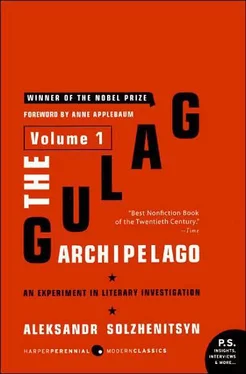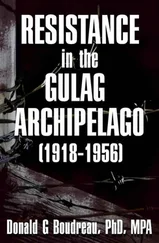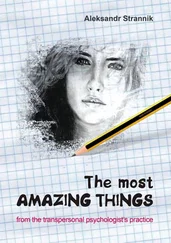26. Ramzin has been undeservedly neglected in Russian memories. In my view, he fully deserved to become the prototype of a cynical and dazzling traitor. The Bengal fire of betrayal! He wasn’t the only such villain of this epoch, but he was certainly a prominent case.
27. Protsess Prompartii, p. 504. And that is how they were talking here in the Soviet Union, in our own country, in 1930, when Mao Tse-tung was still a stripling.
29. Ibid., p. 49.
30. Ibid., p. 508.
31. Ibid., p. 509. For some reason, the main thing about the proletariat is always, believe it or not, sensitivity. Always via the nostrils.
32. He was refused rehabilitation. After all, the case in which he was tried had entered the golden tables of our history. After all, one cannot take back even one stone, because the entire building might collapse. Thus it is that M.P.Y. still has his conviction on his record. However, for his consolation, he has been granted a personal pension for his revolutionary activity! What monstrosities exist in our country.
33. One was Kuzma A. Gvozdev, a man whose fate was bitter. This was the same Gvozdev who had been chairman of the workers’ group in the War Industry Committee, and whom the Tsarist government, in an excess of stupidity, had arrested in 1916, and the February Revolution had made Minister of Labor. Gvozdev became one of the martyr long-termers of Gulag. I do not know how many years he had been imprisoned before 1930, but from 1930 on he was in prison continuously, and my friends knew him in Spassk Camp, in Kazakhstan, as late as 1952.
34. He is not to be confused with Colonel Yakubovich of the General Staff, who, at the same time and the same meetings, represented the War Ministry.
35. All the information here comes from Volume 41 of the Granat Encyclopedia, in which either autobiographical or reliable biographical essays on the leaders of the Russian Communist Party (Bolsheviks) are collected.
36. The only one he defended was Yefim Tseitlin—but not for long.
37. See what a wealth of information we are deprived of because we’re protecting Molotov’s noble old age.
39. Your own blood, too, is going to flow soon, Klyugin! Caught in the Yezhov gang of gaybisty, Klyugin will have his throat cut by the stool pigeon Gubaidulin.
40. Generally speaking, he was wrong just on this one point.
41. One little note on eight-year-old Zoya Vlasova. She loved her father intensely. She could no longer go to school. (They teased her: “Your papa is a wrecker!” She would get in a fight: “My papa is good!”) She lived only one year after the trial. Up to then she had never been ill. During that year she did not once smile; she went about with head hung low, and the old women prophesied: “She keeps looking at the earth; she is going to die soon.” She died of inflammation of the brain, and as she was dying she kept calling out: “Where is my papa? Give me my papa!” When we count up the millions of those who perished in the camps, we forget to multiply them by two, by three.
1. N. S. Tagantsev, Smertnaya Kazn (Capital Punishment), St. Petersburg, 1913.
2. Thirteen people were executed in Schliisselburg from 1884 to 1906. An awesome total—for Switzerland perhaps!
3. Latsis, Dva Goda Borby na Vnutrennom Fronte, p. 75.
4. Now that we have started to make comparisons, here is another: during the eighty years of the Inquisition’s peak effort (1420 to 1498), in all of Spain ten thousand persons were condemned to be burned to death at the stake—in other words, about ten a month.
5. Testimony of B., who brought food to the cells of the prisoners condemned to be shot.
6. What isn’t known in our schools is the fact that Saltychikha, by a verdict of her own peers, was imprisoned for eleven years in the subterranean crypt of the Ivanovsky Monastery in Moscow for the atrocities inflicted on her serfs. (Prugavin, Monastyrskiye Tyurmy [Monastery Prisons], Posrednik Publishers, p. 39.)
7. “ Osnovy Ugolovnogo Zakonodatelstva SSSR ” (“Fundamental Principles of Criminal Legislation of the U.S.S.R.”), Article 22, in Vedomosti Verkhovnogo Soveta SSSR (Bulletin of the Supreme Soviet of the U.S.S.R.), 1959, No. 1.
8. N. Narokov, Mnimyye Velichiny, Roman v 2-kh Chastyakh (Imaginary Values; a Novel in Two Parts), New York, Chekhov Publishing House, 1952.
9. Strakhovich has all his prison notebooks even now. And his “scientific career” outside the bars only began with them. He was destined later on to head up one of the first projects in the U.S.S.R. for a turbojet engine.
10. His stories about the consumer cooperatives are remarkable and deserve to be published.
1. Tyurzak=TYURemnoye ZAKlyucheniye=prison confinement. Tyurzak is an official term.
2. TON=Tyurma Osobogo Naznacheniya=Special Purpose Prison. TON is likewise an official abbreviation.
3. Vera Figner, Zapechatlenny Trud: Vospominaniya v Dvukh Tomakh ( Impressed Labor: Memoirs in Two Volumes ), Moscow, “Mysl,” 1964.
4. According to the account of M. Novorussky, from 1884 to 1906 three prisoners in Schliisselburg committed suicide and five others went insane.
5. P. A. Krasikov, who, as we have seen, later condemned the Metropolitan Veniamin to death, read Marx’s Capital in the Peter and Paul Fortress. (But he was there only a year, and then they let him out.)
6. Vyshinsky, Ot Tyurem k Vospitatelnym Uchrezhdeniyam .
7. From 1918 on, they did not hesitate to imprison women SR’s, even when they were pregnant.
8. How like Eichmann, is it not?
9. In 1925 the stone was overturned, and the names on it were thus buried too. Any of you who clamber about Solovki—seek it out and gaze upon it!
10. One of the SR’s in the Sawatyevsky Monastery was Yuri Podbelsky. He collected the medical documents on the Solovetsky massacre—for publication at some future date. But a year later, at the Sverdlovsk Transit Prison, they discovered a false bottom in his suitcase and confiscated the material he’d hidden. And that is how Russian history stumbles and falls.
11. M. N. Gernet, Istoriya Tsarskoi Tyurmy (A History of Czarist Prisons), Moscow, Yuridicheskaya Literatura (Legal Literature Publishers), 1960-1963, Vol. V, Ch. 8.
13. But they always demanded support for themselves from the SR’s and Social Democrats. On a prisoner transport to Karaganda and the Kolyma in 1936, they addressed as traitors and provocateurs all those who refused to sign their telegram to Kalinin protesting “against sending the vanguard of the Revolution [i.e., themselves] to the Kolyma.” (The story was told by Mako-tinsky.)
Читать дальше












